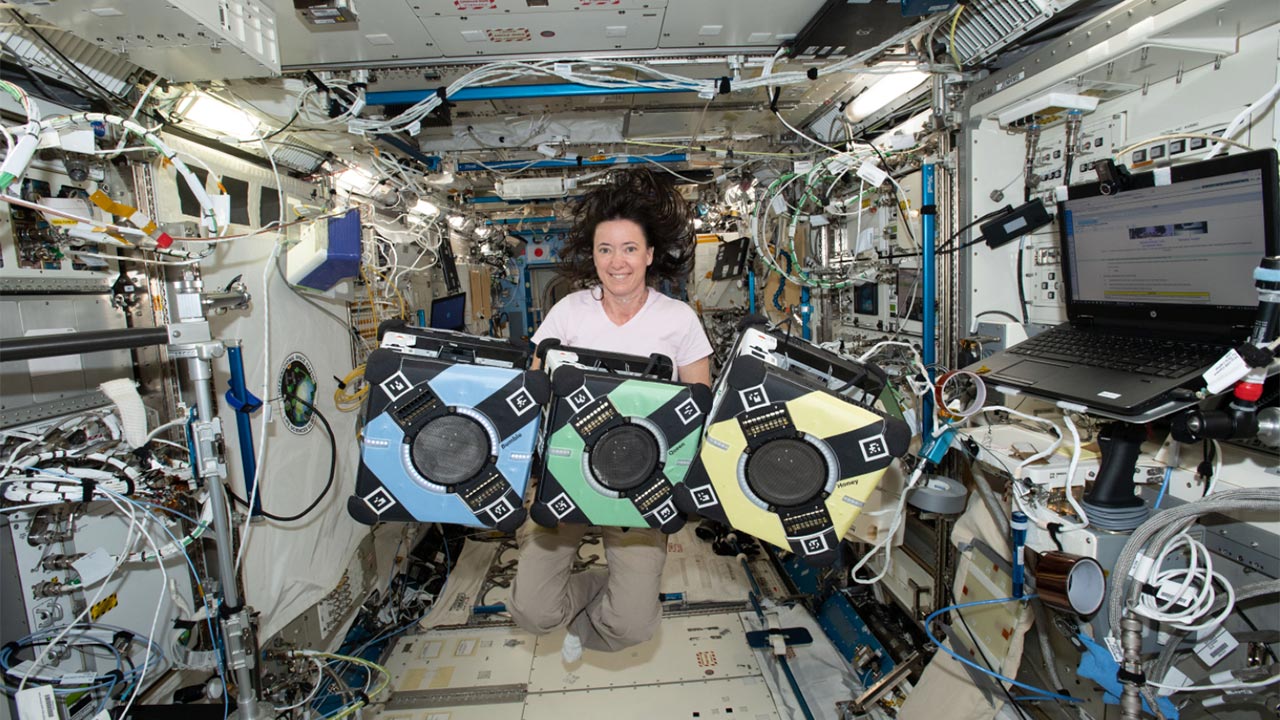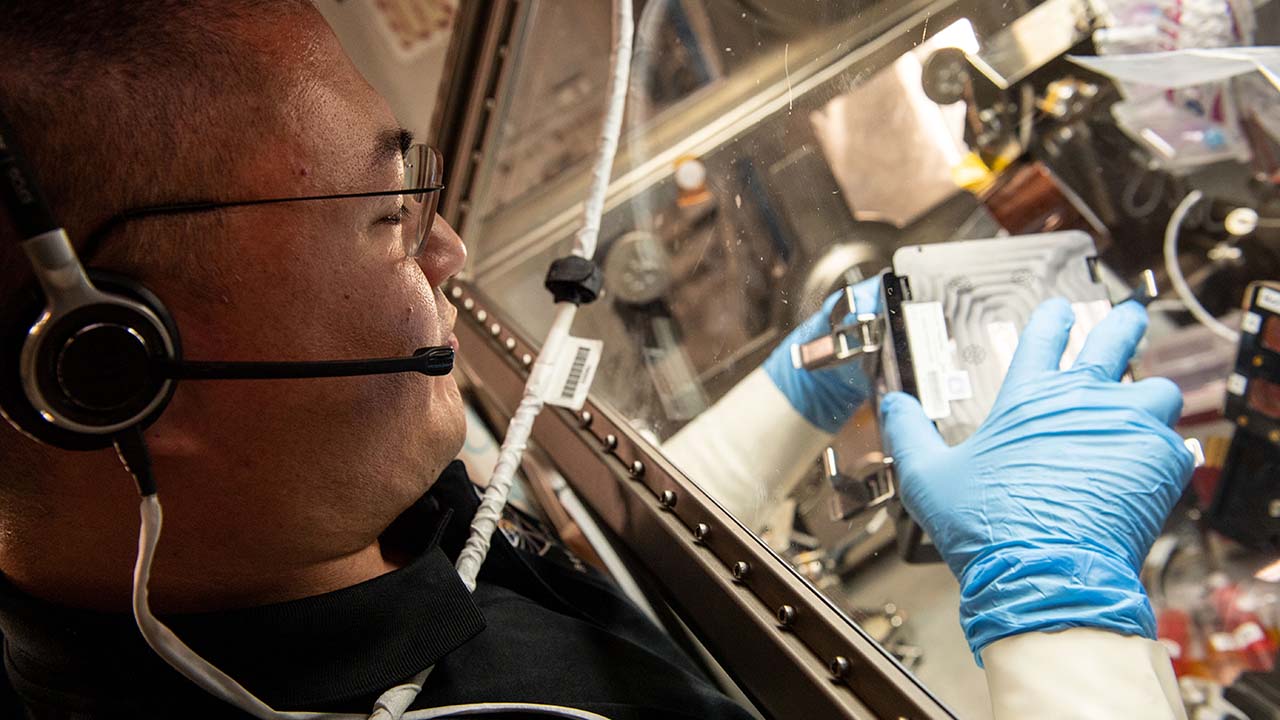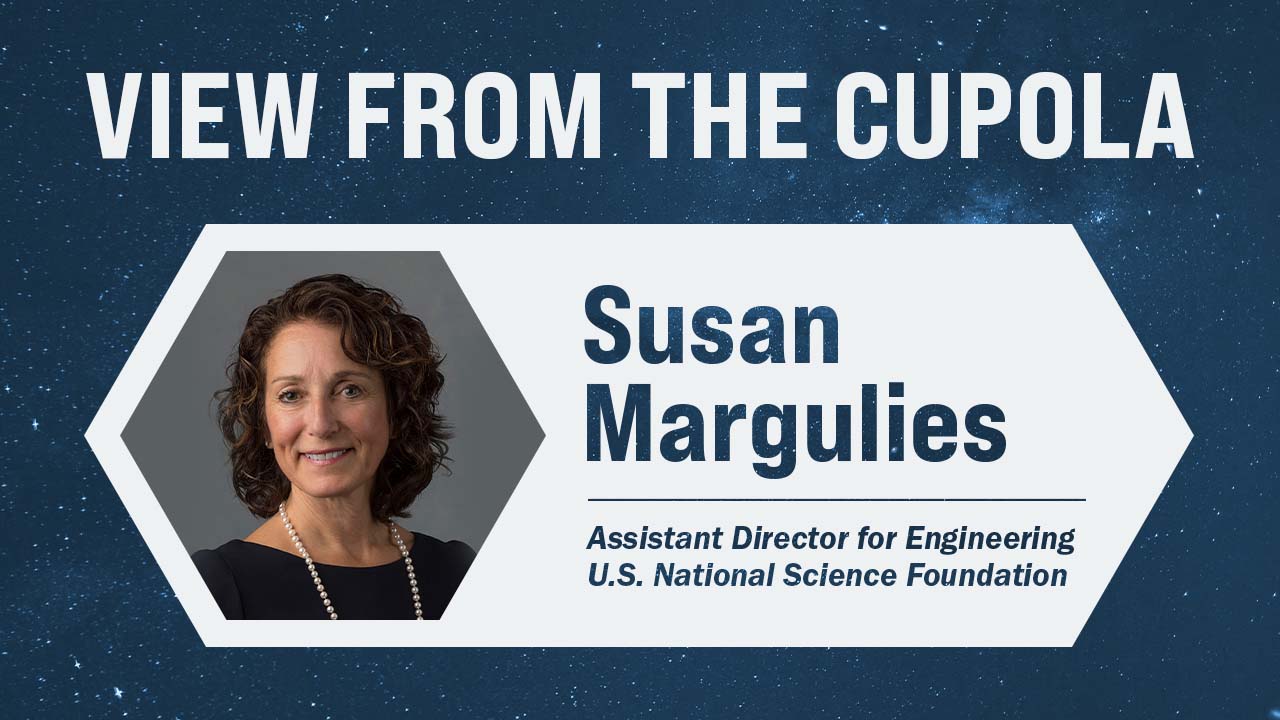Sensors, Satellites, and Sidekicks: Chemical Fingerprinting From Space for Valuable Applications on Earth
Beside some of the greatest heroes, you’ll find a loyal sidekick ready to jump in and help whenever a challenge arises. Batman has Robin.…
From Root Cause to Remedy: Can Microgravity Help Prevent Post-Traumatic Osteoarthritis?
Alan Grodzinsky sees things differently. When he uses fluorescent dyes to test cell viability in the cartilage tissue he studies, dead cells are supposed…
Free-Flying Robots in Space: How Real-Life Droids are Testing New Tech
Five years ago, on a space station not so far away, a trio of cube-shaped robots embarked on a multi-year mission to help pave…
View From the Cupola
I am excited to introduce this edition of Upward® magazine, which highlights how flying robots, helpful sidekicks, and tissue chips containing living human cells…
Cultivating the Cosmos: Decoding Crop Resilience Through Space-Grown Cotton
Plants don’t have bones or muscles or brains, but they’re always on the move. Driven by their genetics, some are hardwired to flower in…
Unlocking the Secrets of the Immune System: How Tissue Chips in Space Could Hold the Key
They say you’re only as old as you feel, but in reality, you’re only as old as your immune cells. Even though the calendar…
View From the Cupola: Susan Margulies
What can we discover about phenomena on Earth when soaring approximately 250 miles above our planet’s surface? As you will find in this issue…
A Small Drop With a Big Impact: Fundamental Science in Space to Improve Medicine on Earth
It’s 10 p.m., and researchers and students excitedly gather inside a lab at Rensselaer Polytechnic Institute (RPI) in New York. All are focused on…
View From the Cupola: Ray Lugo
In 1994, as a much younger self, I had the opportunity to work with a team at NASA’s Johnson Space Center (JSC) on the…
Stem Cells and Space: What Microgravity Can Teach Us About the Human Heart
The musical “Rent” famously calculated 525,600 minutes in a year, but how do you measure a year in heartbeats? The human heart is a…
Heating Things Up in Microgravity: Experiments in Space Answer Burning Questions About Fire Behavior
Ya-Ting Liao has always been fascinated by fire. Even as a child growing up in Taiwan, she was interested in the science that makes…
Going Cool to Go Green: Studying Cool Flames in Space to Improve Engine Efficiency
Transportation is crucial to our society, yet it is something most of us take for granted. There are more than 1.4 billion cars worldwide…
- Go to page 1
- Go to page 2
- Go to page 3
- Interim pages omitted …
- Go to page 6
- Go to Next Page »














